One of the most refreshing signs of Spring is when bulbs start to bloom. You see them poking their heads above ground; little shots of color from yellow daffodils and purple crocus.
One of my favorite places for a walk in Boston is North Point Park, and the planting design by Oehm van Sweden shows off their signature style of planting in large, natural drifts. This time of year, the spring bulb display is really showing off.
Most of the plantings are large drifts of daffodils; a great choice since they are left alone by critters and are reliably perennial (i.e. daffodils will come back year after year). This makes daffodils a great choice in a low maintenance, natural setting.
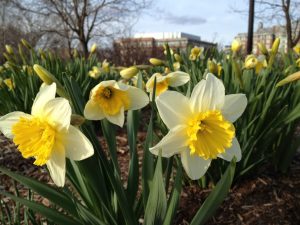 |
| Cheerful daffodils signal spring |
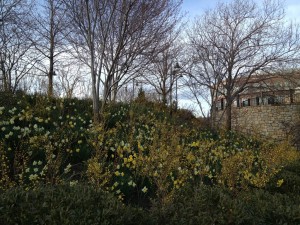 |
| This hillside is planted with daffodils and forsythia, a gorgeous combination |
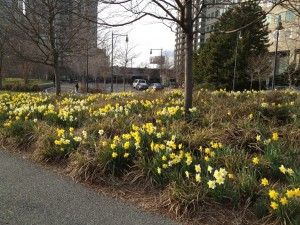 |
| The foliage of most bulbs is messy once it starts to die back. Here, daffodils are planted with ornamental grasses, which will emerge and hide the yellowing bulb foliage. |
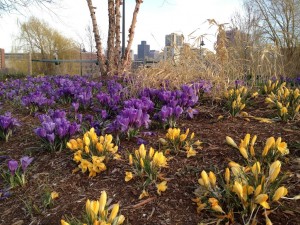 |
| Crocus in a high contrast color combination of purple and yellow crocus is eye catching. These are also great for naturalizing. |
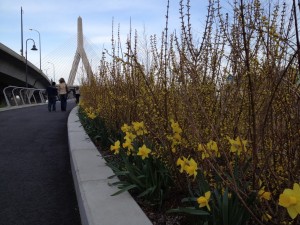 |
| More daffodils planted with forsythia, I love how this works together |
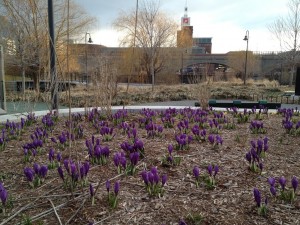 |
| Drifts of purple crocus create a beautiful foreground to this picture |
For the home garden, it’s easy to plant bulbs in drifts. You can actually dig out and prepare the whole plant bed area and randomly cast a mixture of bulbs (colors or types) over the ground. Then backfill with soil and you’ll have a beautiful, natural carpet of flowers the following spring. Consider the messy look of the foliage as it dies back and plant bulbs with companions like grasses, black eyed susans, or hosta.
All of these spring blooming bulbs must be planted in the fall (in New England the window is October-November). You want to wait until the ground temperature has cooled off to about 55 degrees. In general, this is when you start to turn the heat on, or when there is frost on your car windshield in the morning.
To make sure you don’t miss the opportunity to enjoy these spring bloomers, put a little reminder in your calendar (around September/October) to plan for and plant your bulb display for next spring!




